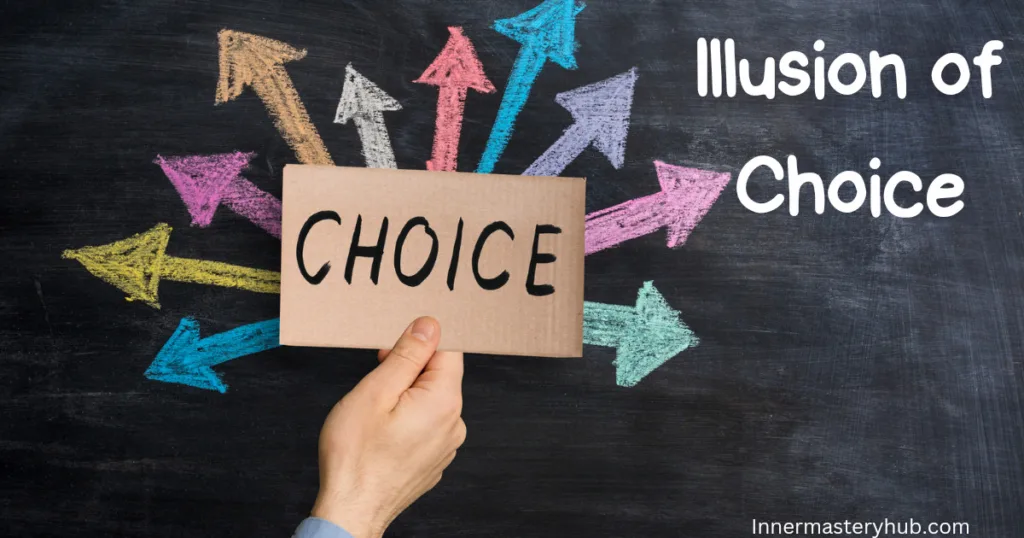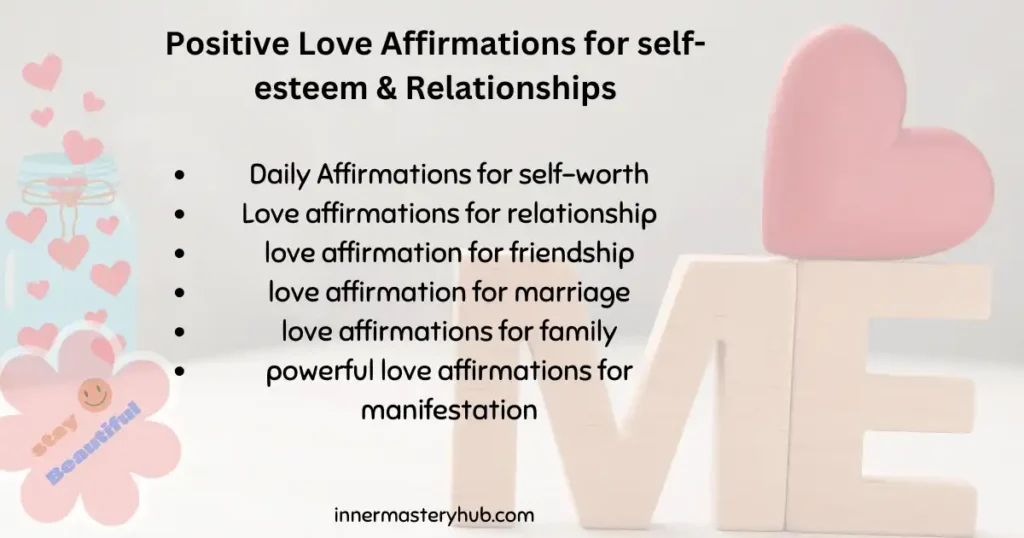Hidden Influences of Illusion of Choice in Decision-Making

The illusion of choice is an effective marketing tactic that makes consumers believe they have more control over their choices than they do. It is utilized in various settings, including grocery stores, vehicle dealerships, and the Internet. But how can we recognize and avoid the illusion of choice, enabling us to make better-informed purchasing decisions?
The “Illusion of Choice” is a cognitive bias in which people overestimate their level of control over their lives. In this blog article, we’ll look at the psychology behind the illusion of choice and provide advice on how to avoid falling for it. We’ll also discuss the importance of making conscious purchasing decisions and how to do so in a world that constantly attempts to sell us more things.
History of the Illusion of Choice
The term “illusion of choice” was first introduced by American psychologist William James in his 1884 book, “The Principles of Psychology.” James claimed that choices can be forced or avoidable, and that “every dilemma based on a complete logical disjunction, with no possibility of not choosing, is an option of this forced kind.”
The illusion of choice first appeared in marketing and advertising in the early twentieth century. Marketers discovered that providing customers with more options might boost sales. This gives consumers the impression that they have more control over their purchases, even though the corporation ultimately determines the options available.
The illusion of choice has become a common characteristic of modern life. We are continually faced with decisions, both significant and minor. We are inundated with options, from what to eat for breakfast to what type of car to purchase. This might be overpowering and lead to regrettable conclusions.
Types of the Illusion of Choice
There are two main types of the illusion of choice:
The false sense of control type
This illusion of choice occurs when people believe they have more control over their lives than they do. This can lead to suboptimal decision-making, as individuals may choose options that are not in their best interests.
For example, people may feel they have a great deal of control over their health by choosing different food types. Still, in reality, the food choices that are available to them are often limited by their income, access to healthy food, and other factors.
The paradox of choice type
When people are given too many options, they experience the illusion of choice, which can lead to dissatisfaction with their choices. People often struggle to compare and analyze a large number of options.
For example, a person may become overwhelmed by the number of different streaming services available and end up selecting a service with which they are dissatisfied because they were unable to make an informed decision.
Problematic Decision-Making Signs Related to the Illusion of Choice
- Feeling overwhelmed by the abundance of possibilities. This can cause procrastination, hesitation, and decision paralysis.
- Concentrating on little details or unimportant aspects of a decision. This can result in overthinking and analytical paralysis.
- Constantly second-guessing your decisions. This can result in worry and regret.
- Feeling pressured to make the correct decision. This can result in unrealistic expectations and disappointment.
- Comparing your decisions with those of others. This may evoke feelings of inadequacy and self-doubt.
- Making decisions based on outside influences, such as societal pressure or marketing hype. This can result in decisions that are not in your best interests.
Practical Applications of the Illusion of Choice
Advertising and marketing commonly use the illusion of choice to give customers the idea that they are in control of their purchasing decisions. The same methods can be employed in political campaigns to boost voter trust in their chosen candidate.
Software companies’ “freemium” approach exemplifies the illusion of choice. The freemium strategy involves providing a free base version of the software and charging for additional features and capabilities. Users have the option to use the free version or upgrade to the paid version, creating the illusion of choice.
However, in practice, the free version is frequently limited or restricted in some way, making it impossible for customers to utilize the product thoroughly. This can put pressure on customers to upgrade to the paid version, even if they do not need or want the additional features.
Companies manipulate clients into the illusion of choice
Companies can manipulate customers through the illusion of choice in several ways, including:
Offering a large number of choices but with limited differentiation.
This might overload customers and make it tough for them to make decisions. A grocery store, for example, may sell hundreds of various types of cereal, yet the majority are practically the same, differing only in branding.
Presenting choices in a way that biases consumers towards specific options.
Pricing, positioning, and marketing are all options for doing this. For example, a corporation may display its most expensive products at eye level or offer a discount on the product it wants customers to buy.
Using limited-time offers or scarcity tactics creates a sense of urgency, pressuring consumers to make a decision.
For example, a company might advertise a “sale” that is only available for a limited time, or it might say that only a few units of a product are left in stock.
Limited-time offers. Companies frequently use limited-time offers to instill a sense of urgency in customers and pressure them to make a decision. For example, a corporation may promote a “sale” that is only accessible for a short time.
Impact of the Illusion of Choice
The illusion of choice can have a significant influence on our lives. It can result in worry, anxiety, and poor decision-making. Here are some instances.
Stress and frustration
A person is trying to choose a new phone, but with so many different options available, they become stressed and frustrated. They feel like they can’t make a decision, and they end up putting off the purchase altogether.
Analysis paralysis
A person is trying to decide on a new employment and spends so much time exploring numerous choices that they becomes paralyzed by analysis. They are unable to make a decision and end up feeling trapped in their existing work.
Poor decision-making
A person faces too many different types of cereal at the grocery store and becomes overwhelmed. They choose a cereal they don’t like because they are too tired to compare all the options.
Increased inequality
A company offers different prices for the same product to different groups of people. For example, the company might charge higher prices to lower-income people. This can lead to increased inequality, as individuals with lower incomes are unable to afford the same products and services as those with higher incomes.
Manipulation
A company offers a customer three different subscription plans for its streaming service. However, the basic plan is minimal, and the premium plan is costly. This gives the customer the illusion of choice, but in reality, the company is trying to manipulate the customer into choosing the middle-tier plan.
Buyer’s remorse
A person buys a new pair of shoes but later realizes they made the wrong decision. They feel like they wasted their money, and they regret their purchase.
8 Tips to Improve Decision Making
Effective decision-making is a necessary ability for success in many aspects of life. These ideas can help you enhance your decision-making abilities and make better decisions. Whenever you feel overwhelmed by the number of options from which you must make a decision:
Set specific goals and objectives. What are you hoping to achieve with your decision? Once you’ve identified your objectives, you can narrow down your options and make a more informed decision.
Collect all of the relevant information. Consider all variables that influence your decision, including both advantages and disadvantages, potential consequences, and risks.
Seek feedback from others. Speak with people who are experts in the field or have made comparable judgments in the past. Their opinions can help inform a conclusion.
Assess your choices. Weigh the merits and drawbacks of each decision, as well as the potential consequences. Use a decision-making matrix or another tool to help you arrange your ideas and compare your possibilities.
Be confident in your instincts. Listening to your instincts might sometimes be the most excellent approach to making decisions. If you have a strong intuition about one choice, it may be worthwhile to pursue.
Keep bias under control. When making selections, consider your prejudices and behaviors. Biases can sway your decision-making.
Assess potential dangers. Consider the potential costs and risks associated with your decisions.
Avoid haste. Before making a decision, carefully consider all of your options. Making hasty decisions can lead to future regrets.
Examples of the Illusion of Choice
Double Bind
A double bind is a communication pattern in which a person receives two or more contradicting messages and is unable to win or exit the situation. This may cause worry, bewilderment, and a sense of powerlessness.
Here’s an example of a double bind that employs the appearance of choice.
A manager tells their employee: “I want you to be creative and innovative, but I also want you to stick to the company’s strict policies and procedures.”
The employee is caught in a catch-22, having received two contradictory messages. They are instructed to be creative and original while adhering to the company’s guidelines.
This creates an environment in which the employee cannot win. If they are creative and imaginative, they may deviate from business policies. If they adhere to the company’s rules, they may be unable to be innovative and original.
False Dilemma
A false dilemma, also known as a false dichotomy or false binary, is an informal fallacy in which two options are presented as the only options when other options exist.
The illusion of choice can be utilized to fabricate artificial dilemmas. For example, a corporation may present a buyer with an option between two practically identical products. Customers believe they have a choice, yet they are often coerced into making a purchase.
Desirability Bias
We are more inclined to select solutions that we find appealing, even if they are not the best fit for us, due to a cognitive bias known as desirability bias. If a product is marketed as “new and improved” or “the best on the market,” for instance, we may be more inclined to buy it even if we don’t need it or if there are other items that would be more appropriate for our needs.
Here is an illustration of how desirability bias and the illusion of choice can coexist:
Even though a clothing store may carry a large variety of styles, all of the apparel is manufactured using the same low-quality materials. Additionally, the company may employ scarcity strategies and limited-time deals to create a sense of urgency and encourage customers to make a purchase.
The Illusion of Choice and Capitalism
In capitalism, the illusion of choice is a marketing tactic frequently employed to give consumers the impression that they have greater control over their decisions than they actually do. This can be achieved by providing a large number of options with little distinction. A supermarket may have hundreds of varieties of cereal, yet the majority of them are essentially the same, albeit with variations in packaging and branding.
Another strategy for giving customers the illusion of choice is to leverage scarcity or limited-time incentives to prompt them to make decisions promptly. A corporation might, for instance, state that just a small number of units of a product are left in stock or advertise a “sale” that is only available for a short period.
Another way to give the appearance of choice is to use default settings. For instance, unless you specifically choose not to, a credit card issuer may automatically enroll you in travel insurance.
In this sense, experts and capitalists frequently employ the illusion of choice, as it can boost sales and profits. Businesses can charge greater rates for their goods and services and persuade customers to purchase more items than they need by creating the appearance of choice.
Final Thoughts
One effective marketing tactic that can be used to influence customers into making bad judgments is the illusion of choice. To make better selections and steer clear of manipulation, it’s critical to recognize the illusion of choice.
We can avoid the appearance of being manipulated by becoming conscious of the marketing strategies that businesses employ to deceive us—considering our options carefully and taking our time to make an informed decision. Concentrating on our beliefs and needs, rather than merely our wants, when making decisions can bring balance.
Thoroughly weighing the pros and cons of several possibilities and not being scared to reject a choice if it doesn’t suit our needs. Additionally, we may support businesses that provide actual options rather than just the appearance of variety. By doing so, we can contribute to the development of a sustainable and ethical economy.






